Euklids rumteleskop samles
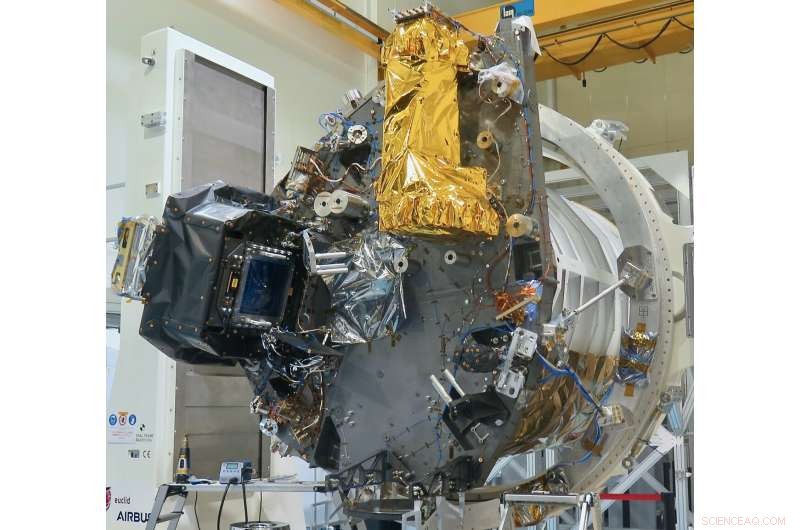
VIS- og NISP-instrumenterne på Euclids nyttelastmodul. Kredit:Airbus
ESA's Euclid-mission har nået endnu en milepæl på sin rejse mod opsendelse. Dens to instrumenter er nu bygget og fuldt testet. Disse er blevet leveret til Airbus Defence and Space i Toulouse, Frankrig, hvor de nu bliver integreret med teleskopet for at danne missionens nyttelastmodul.
Euclid består af et 1,2 meter spejlteleskop, der er designet til at arbejde ved både synlige og nær-infrarøde bølgelængder - sidstnævnte er lige længere end det røde lys mennesker kan se. Teleskopet vil opsamle lys fra fjerne kosmiske objekter og føre det ind i to instrumenter.
Det synlige instrument (VIS) og det nære infrarøde spektrometer og fotometer (NISP) vil køre parallelt, optager data samtidigt fra hvilken del af himlen teleskopet peger mod.
Euklids mission er at måle formerne på mere end en milliard galakser, og de nøjagtige rødforskydninger af titusindvis af millioner af galakser på tværs af mere end en tredjedel af himlen. Rødforskydningen er en effekt forårsaget af universets udvidelse. Det strækker bølgelængden af lys udsendt af fjerne galakser; jo længere væk galaksen er, jo mere ekstrem er dens rødforskydning. Galakserne i Euklids undersøgelse vil spænde over 10 milliarder års kosmisk historie, og tillade videnskabsmænd at undersøge det mystiske mørke stof og mørke energi, der menes at dominere universet.
VIS-instrumentet vil håndtere den præcise måling af galakseformer ved at tage de allerbedste billeder af fjerne galakser, som det overhovedet kan. At gøre dette, instrumentet bruger en mosaik af 36 CCD'er, som hver indeholder 4000 pixels gange 4000 pixels. Det giver detektoren i alt omkring 600 megapixel.
"Designet, udvikling, fremstilling, afprøvning og kalibrering af VIS-instrumentet over en halv snes år til en stringent specifikation har været en udfordring, " siger Mark Cropper, VIS instrument Lead og professor ved UCL Mullard Space Science Laboratory, Storbritannien.
"Vi er enormt stolte af, hvad VIS-teamet har opnået for at bringe dette projekt til sin kulmination. At den endelige præstation overgår vores forventninger er en hyldest til deres ekspertise, dedikation og professionalisme."
Ikke alene er antallet af pixels imponerende, instrumentet vil også levere den bedste lavlysfølsomhed over en bred vifte af bølgelængder ved lange integrationstider.
"Dette er meget specielle CCD'er, de er blevet udviklet specielt til Euklid gennem mange år, " siger Alex Short, ESA's VIS nyttelastingeniør.
Det andet instrument, NISP, er dedikeret til at lave spektroskopiske målinger af galakser, hvilket går ud på at opdele deres lys i individuelle bølgelængder. Dette gør det muligt at udlede rødforskydningerne. Denne egenskab gør det muligt for kosmologer at estimere afstanden til den pågældende galakse, og vil gøre det muligt for Euklids data at blive omdannet til de største, mest nøjagtige 3D-undersøgelse af universet nogensinde udført.
"Det internationale NISP-team og de understøttende industrier gjorde et utroligt stykke arbejde med at designe, udvikle og teste dette udfordrende instrument, " siger Thierry Maciaszek, NISP instrument projektleder, fra CNES og Laboratoire d'Astrophysique de Marseille, Frankrig.
"Dette er, imidlertid, ikke slutningen på historien for os, da mange store aktiviteter skal gennemføres med NISP på satellitniveau. Vi venter utålmodigt på det første lys under flugten, der viser de fremragende globale præstationer."
NISP-detektoren vil have det største synsfelt, der nogensinde er fløjet i rummet til et infrarødt instrument.
"Kvaliteten af optikken er bare fantastisk, siger Tobias Boenke, Mission System &NISP Instrument Engineer hos ESA.
En nøglefaktor for at opnå Euclids exceptionelle optiske nøjagtighed var en beslutning, der blev truffet tidligt i projektets historie om at konstruere hele nyttelastmodulet af siliciumcarbid. Brugen af dette materiale hos ESA var banebrydende i fremstillingen af teleskopet til Herschel-rummissionen. På ESA's Gaia-mission, støttestrukturen til rumfartøjets undersystemer var monteret på en siliciumkarbidramme. Om Euklid, materialet er brugt til instrumenterne såvel som teleskopet.
Hvorimod metal udvider sig og trækker sig sammen, når dets temperatur ændres, dermed forringe et optisk systems evne til at fokusere lys, siliciumcarbid er ekstremt stabilt over for sådanne variationer i temperatur. Men at bruge forbindelsen bringer sine egne udfordringer. Siliciumcarbid er en keramik og så meget mere skør end metal.
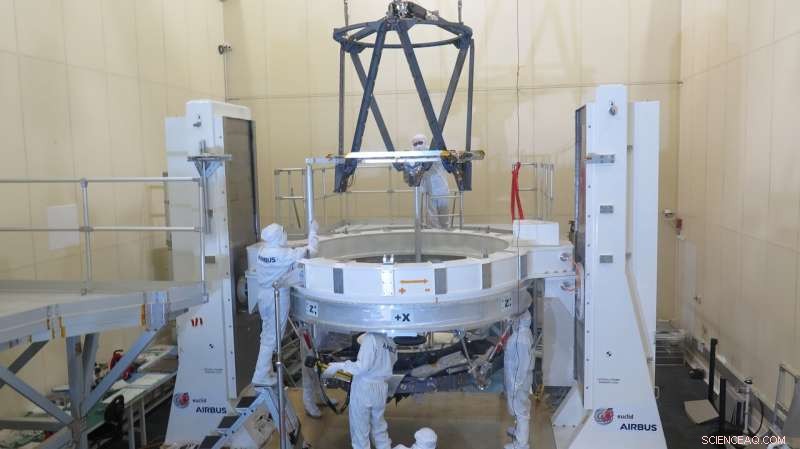
The supporting structure of the telescope’s secondary mirror for ESA’s Euclid spacecraft being brought together for final integration and optical alignment at Airbus in Toulouse, Frankrig. Kredit:Airbus
"It was a big challenge to be able to manufacture the instruments from this material and make sure they can remain undamaged during the launch, " adds Tobias.
Like VIS, NISP also uses specially designed state-of-the-art detectors to record the faint light coming from distant stars and galaxies. Unlike VIS, NISP can also operate in spectrographic mode. The detectors, which are operated at –180°C to provide ultra-low noise and high sensitivity, register these 'spectra' and convert them into tiny electronic signals. These signals can then be amplified and accurately measured to provide the photometric and spectroscopic redshifts.
The instruments will receive light from Euclid's telescope, which has already been assembled at Airbus, Toulouse. Like the instruments, it too is made from silicon carbide and is a state-of-the art construction in all senses.
"We are pushing all the manufacturing levels to the limit, " says Luis Miguel Gaspar Venancio, ESA's Mission Performance &Optical Systems Engineer.
A special component behind the telescope, called the dichroic, separates the collected light and diverts the visible wavelengths to VIS and the infrared wavelengths to NISP.
When the information from VIS and NISP is combined, scientists will be able to deduce the way that the Universe's large-scale distribution of galactic structures has built up throughout cosmic history. This will help them determine the speed at which such structures grow, providing strong constraints on the nature and amount of dark matter and dark energy in the Universe.
The instruments were prepared for delivery to Airbus just before the COVID-19 pandemic imposed restrictions and lockdowns in many ESA member states. Heldigvis, VIS was already at Airbus, and NISP had to wait for a few weeks for shipment from Marseille to Toulouse, but was not on the critical path.
"I am extremely grateful to all project parties:institutes, industry and colleagues at ESA for their dedication and commitment during these difficult times, " says Giuseppe Racca, ESA's Euclid project manager.
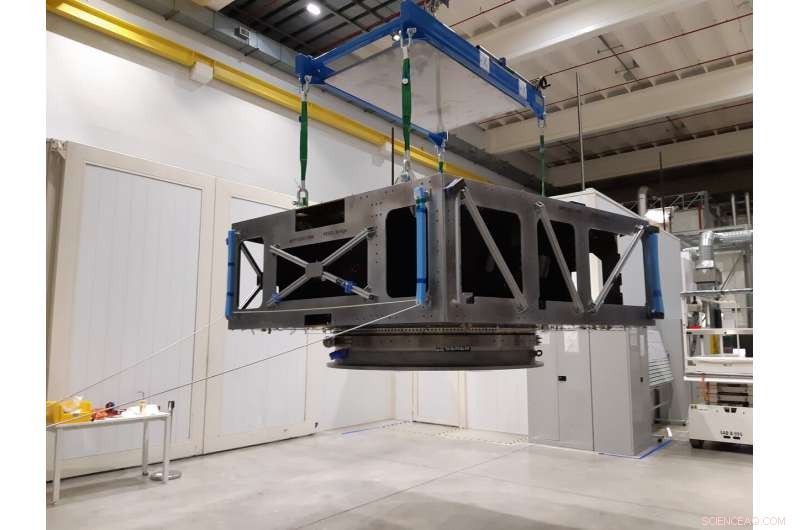
The flight model of ESA’s Euclid mission’s service module being moved in the clean room at Thales Alenia Space in Torino, Italien. Credit:Thales Alenia Space Italy
"We were hit by the pandemic in a particularly critical moment when both VIS and NISP were to be transferred to industry. Despite the work and travel restrictions a concerted effort by all parties allowed to minimize the delays by implementing distributed and sequential integration activities of the instrument units and remote monitoring."
Now that the instruments have been delivered to Airbus, they will be integrated first with the telescope, and next with the rest of the payload module. It has been a long journey getting this far. Euclid was selected for implementation in 2011, having already undergone almost five years of studies. While there is still a lot of hard work and testing ahead, the delivery of the instruments and telescope means that the spacecraft can really begin to come together.
"Endelig, we have something in front of our eyes, " says Luis Miguel. "It's not just paper anymore. It's a fantastic piece of hardware; beautiful in a way."
Integrating the payload module will last several months as it is painstaking work to get everything bolted together, precisely aligned and electronically talking. The instrument's control units have already been mechanically and electrically integrated to the payload module. These tests have verified that the instruments can be properly powered by the spacecraft, can talk to the onboard computers, and can transmit the science data that will then be downloaded to ground through the spacecraft antennas.
Once the telescope has been integrated with the rest of the payload module, it will be shipped to Centre Spatial de Liège, Belgien, for 'end-to-end' testing in a thermal vacuum chamber that can simulate the conditions of space as well as possible on Earth. This test is scheduled to take place in February and March 2021.
Once that test shows that everything is working as expected, the payload module will be shipped to the prime contractor Thales Alenia Space (TAS), in Torino, Italien. TAS has been building the service module, which contains essential systems such as power, propulsion and communications.
The service module's main structure recently passed its structural and thermal tests and is now ready to have the various systems integrated inside. TAS will begin by laying down the pipelines for the propulsion systems, and the cabling for other distributed systems. Flight electronics, herunder computere, power units, and attitude control units, are already mounted on their own structural panels and these will now be installed inside the main structure. Integration is due to be complete in the third quarter of the year, at which time tests will be performed.
TAS will then integrate the payload module with the service module to form the final, finished spacecraft. Derefter, another round of tests will ensure that everything is working together properly. På det tidspunkt, the spacecraft is essentially finished, and ready for launch.
Launch is currently scheduled for the second half of 2022 from Europe's spaceport, Kourou, Fransk Guyana.
Sidste artikelSupermassiv binær sort huljæger:SKA pulsar timing array
Næste artikelSprog vil ændre sig markant på interstellare flyvninger
 Varme artikler
Varme artikler
-
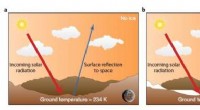 Det seneste arbejde udfordrer synet på den tidlige Mars, forestiller sig en varm ørken med lejligh…Den forenklede overfladeenergibalance for tidlig Mars viser faldet i overfladetemperaturen med stigende mængder overfladeis. Den resulterende stigning i overfladereflektivitet er repræsenteret af en u
Det seneste arbejde udfordrer synet på den tidlige Mars, forestiller sig en varm ørken med lejligh…Den forenklede overfladeenergibalance for tidlig Mars viser faldet i overfladetemperaturen med stigende mængder overfladeis. Den resulterende stigning i overfladereflektivitet er repræsenteret af en u -
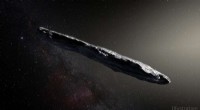 NASA lærer mere om Interstellar Visitor OumuamuaEn kunstners koncept af interstellar asteroide 1I/2017 U1 (Oumuamua), da den passerede gennem solsystemet efter dens opdagelse i oktober 2017. Observationer af Oumuamua indikerer, at den må være meget
NASA lærer mere om Interstellar Visitor OumuamuaEn kunstners koncept af interstellar asteroide 1I/2017 U1 (Oumuamua), da den passerede gennem solsystemet efter dens opdagelse i oktober 2017. Observationer af Oumuamua indikerer, at den må være meget -
 Forskere undersøger den lyseste klyngegalakse i MACS 1931.8-2635Kredit:CC0 Public Domain Brug af Very Large Telescope (VLT) og Atacama Large Millimeter/submillimeter Array (ALMA), forskere fra universitetet i Wien, Østrig, og andre steder har undersøgt den lys
Forskere undersøger den lyseste klyngegalakse i MACS 1931.8-2635Kredit:CC0 Public Domain Brug af Very Large Telescope (VLT) og Atacama Large Millimeter/submillimeter Array (ALMA), forskere fra universitetet i Wien, Østrig, og andre steder har undersøgt den lys -
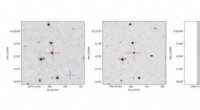 Astronomer opdager en exoplanet på størrelse med Jorden med meget kort omløbsperiodeArkivbilleder af EPIC 228813918, demonstrerer sin rette bevægelse gennem næsten seks årtier. Billederne er fra (i) 1954, (ii) 1992, og (iii) 2012. Hvert billede er 50 gange 50, og i hvert tilfælde nor
Astronomer opdager en exoplanet på størrelse med Jorden med meget kort omløbsperiodeArkivbilleder af EPIC 228813918, demonstrerer sin rette bevægelse gennem næsten seks årtier. Billederne er fra (i) 1954, (ii) 1992, og (iii) 2012. Hvert billede er 50 gange 50, og i hvert tilfælde nor
- Orkanen Ida forventer at forstærkes, når den nærmer sig Louisiana
- En alsidig, integreret arbejdsgang for interaktionsproteomik
- Ny 3D polypyrrol aerogel-baseret elektromagnetisk absorber kan tjene som et billigt alternativ til g…
- George Laurer, opfinder af allestedsnærværende UPC, dør som 94-årig
- Sådan fungerer militære flyovers
- Globale virksomheder lover gennemsigtighed om klimarisiko


